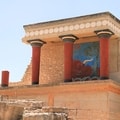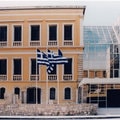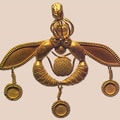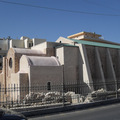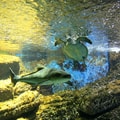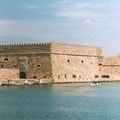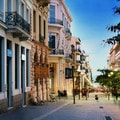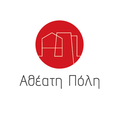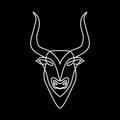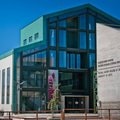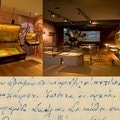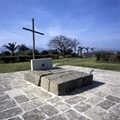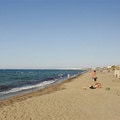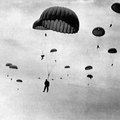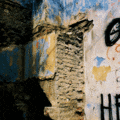Activities
Take full advantage of your stay in Heraklion
 Knossos Palace
Knossos Palace
6.2 km away
The Minoan palace is the main site of interest at Knossos, an important city in antiquity, which was inhabited continuously from the Neolithic period until the 5th c. AD. The palace (more)
 Historical Museum of Crete
Historical Museum of Crete
0.15 km away
Founded in 1953 by the Society of Cretan Historical Studies (S.C.H.S.), the Historical Museum of Crete (H.M.C.) presents a comprehensive view of Cretan history from early Christian (more)
- € 5
 Archeological Museum of Crete
Archeological Museum of Crete
0.7 km away
The Heraklion Archaeological Museum is regarded as one of Europe's most important museums. The present building was constructed between 1933 and 1937 to plans by P. Karantinos, on (more)
 Church of St. Peter and Paul
Church of St. Peter and Paul
0.15 km away
The Church of Ss. Peter and Paul was built in the first years of Venetian rule as the katholikon in the Dominican order monastery (Domenicani Predicatori). It is one of the oldest (more)
 Cretaquarium
Cretaquarium
19.2 km away
The Cretaquarium project was conceived by employees of the former Institute of Marine Biology of Crete (IMBC) to create the first large aquarium in Greece, as part of a marine park (more)
 Venetian fortress of Koules
Venetian fortress of Koules
0.35 km away
The Venetian fortress of Koules dominates the entrance to the Venetian harbour of Heraklion. The Venetians called it the “Sea Fortress” (Castello a Mare or Rocca a Mare), but today (more)
 25th August Street
25th August Street
0.29 km away
25th of August Street runs from the Meidani, the central crossroads of Heraklion, down to the Venetian harbour and the fortress of Koules. Along it are the Basilica of St Mark, the (more)
 Santorini Boat Trip
Santorini Boat Trip
70.0 km away
Enjoy a one day trip tp Santorini from Heraklion. The boat leaves from Heraklion at 8.45 and arrives back at Heraklion at 20.45 on the same day. You have the opportunity of spending (more)
- about 12 hours
 "Unseen City" festival
"Unseen City" festival
1.0 km away
Heraklion, like any urban center,is a city that evolves and grows, creating over time conflicts, marginalization, abandoned landscapes and deprived neighborhoods usually hidden behind (more)
- € 0
 Experience Creta
Experience Creta
1.0 km away
Is it possible to tell a story of a thousand years ago using the latest technology? Is it possible to combine something purely timeless with something utterly pioneering?
The answer (more)
- about 1 hour
- € 12
 Natural History Museum
Natural History Museum
0.5 km away
Operating within the wider University of Crete framework, the Natural History Museum of Crete fulfils all the roles demanded of a comprehensive, modern museum by:
Keeping and (more)
 Nikos Kazantzakis Museum
Nikos Kazantzakis Museum
17.0 km away
The Nikos Kazantzakis Museum was founded by Yiorgos Anemoyiannis in 1983. The founder's intention was to create a museum capable of housing the numerous significant exhibits relating (more)
 Nikos Kazantzakis Grave
Nikos Kazantzakis Grave
1.2 km away
The grave of the important Cretan writer Nikos Kazantzakis (1883-1957) is located at the highest point of the Walls of Heraklion, the Martinengo Bastion, with panoramic views to the (more)
- less than a minute
 Ammoudara Beach
Ammoudara Beach
2.6 km away
Ammoudara Beach is within walking distance from Atrion Hotel, following the sea -side pedestrian path near the hotel to the beach.
 The Battle of Crete and National Resistance Museum
The Battle of Crete and National Resistance Museum
0.8 km away
The Museum of the Battle of Crete and National Resistance (1941-1945) was founded by the Municipality of Heraklion in May 1994.
The museum's aim is to collect, preserve and exhibit (more)
 Wall memories
Wall memories
0.0 km away
More than merely built-up areas consisting of houses and public services, cities are loci of meetings and exchange. They are cultural loci, which often transubstantiate their energy (more)
